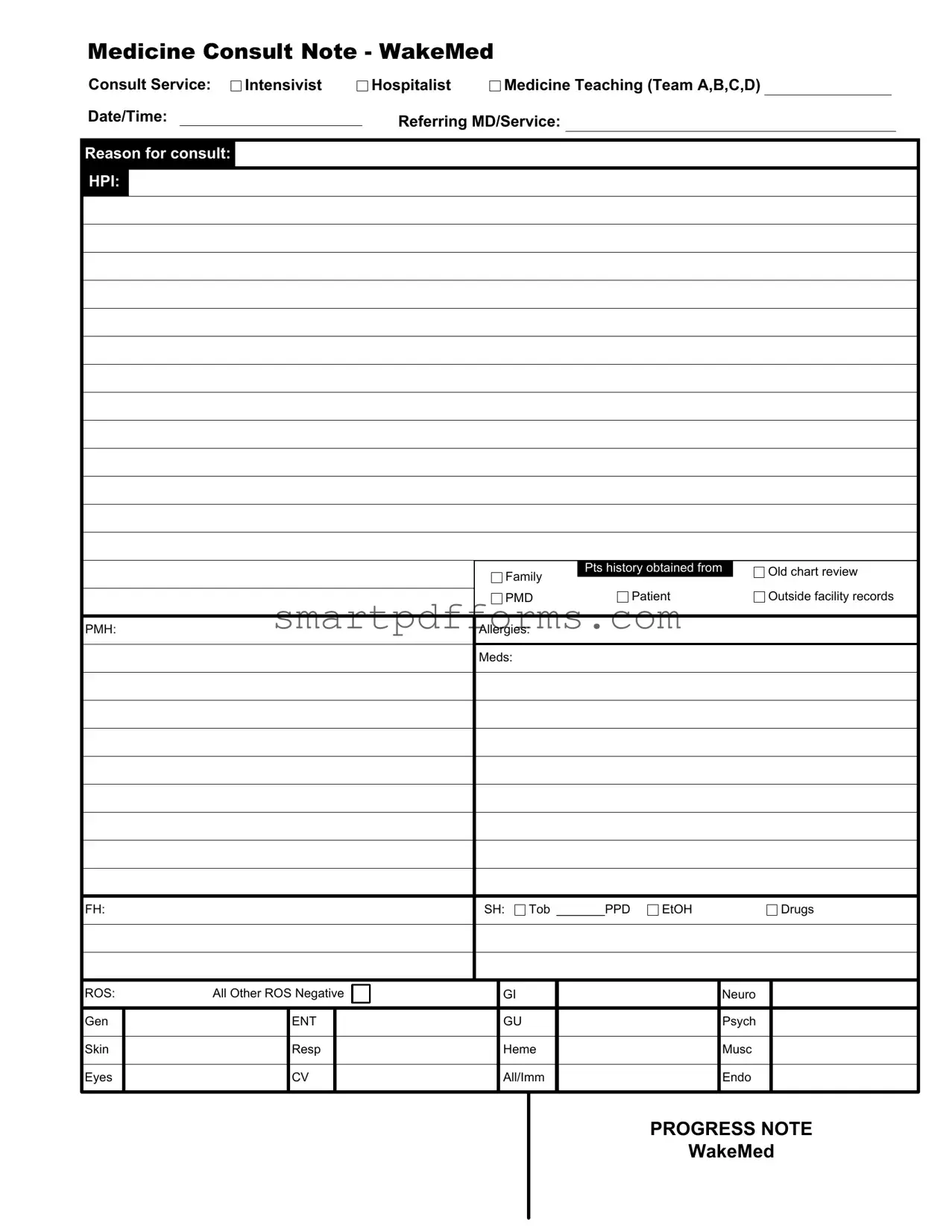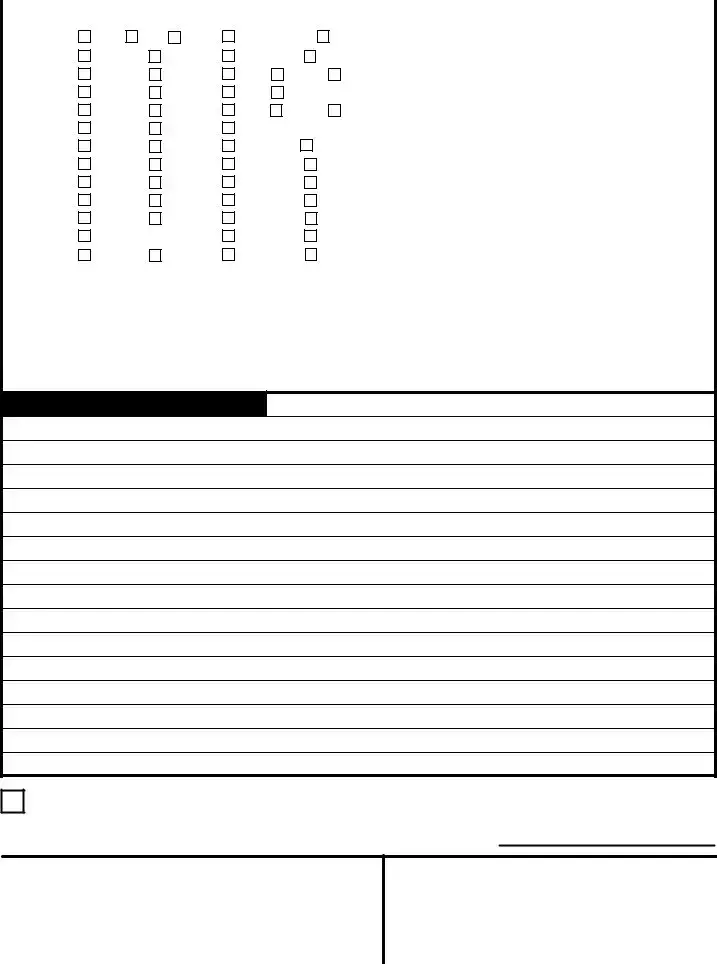- What is the purpose of the Internal Medicine Progress Note form?
This form serves as a detailed record for patients seen by the internal medicine team. It covers the consultation's purpose, patient history, physical examination findings, lab and diagnostic test results, and the assessment and recommendations by the attending physician. This comprehensive documentation ensures continuity of care and facilitates clear communication among healthcare providers.
- Who completes the Internal Medicine Progress Note form?
Both the attending physician and the resident involved in the patient's care are responsible for filling out the form. The attending physician must review, confirm, and agree with the documentation, including any addendums made by the resident physician.
- What is included in the "HPI" section of the form?
The "HPI" or History of Present Illness section includes details about the reason for the current consultation, capturing information from various sources such as family, patient, old chart review, outside facility records, and the Primary Medical Doctor (PMD). This part provides context for the current health issue being addressed.
- How is the "Physical Exam" section of the form structured?
In the physical exam section, both normal findings and abnormalities must be noted across various systems, including general appearance, psychological state, ENT (Ear, Nose, Throat), cardiovascular, respiratory, abdominal, musculoskeletal, neurological, and dermatological aspects. This comprehensive review allows for a detailed assessment of the patient's physical condition.
- What does "ROS" stand for, and what does it include?
"ROS" stands for Review of Systems. This is a thorough checklist that includes gastrointestinal, neurological, genitourinary, ENT, psychiatric, skin, respiratory, hematological, musculoskeletal, ocular, cardiovascular, immunological, and endocrinological systems. The form states if all other reviewed systems are negative, which helps to streamline the patient's medical history review.
- Can you explain the "Labs & Diagnostic Tests" section?
This section is designated for entering results from blood glucose tests and any other relevant laboratory or diagnostic testing that has been performed. It is crucial for diagnosing, monitoring, and making informed decisions about the patient's care plan.
- What is the significance of the attending and resident signatures?
The signatures of the attending physician and the resident confirm that both have reviewed, discussed, and agreed upon the documented findings and the proposed assessment and recommendations. This step ensures accountability and the accuracy of the information recorded on the progress note.


